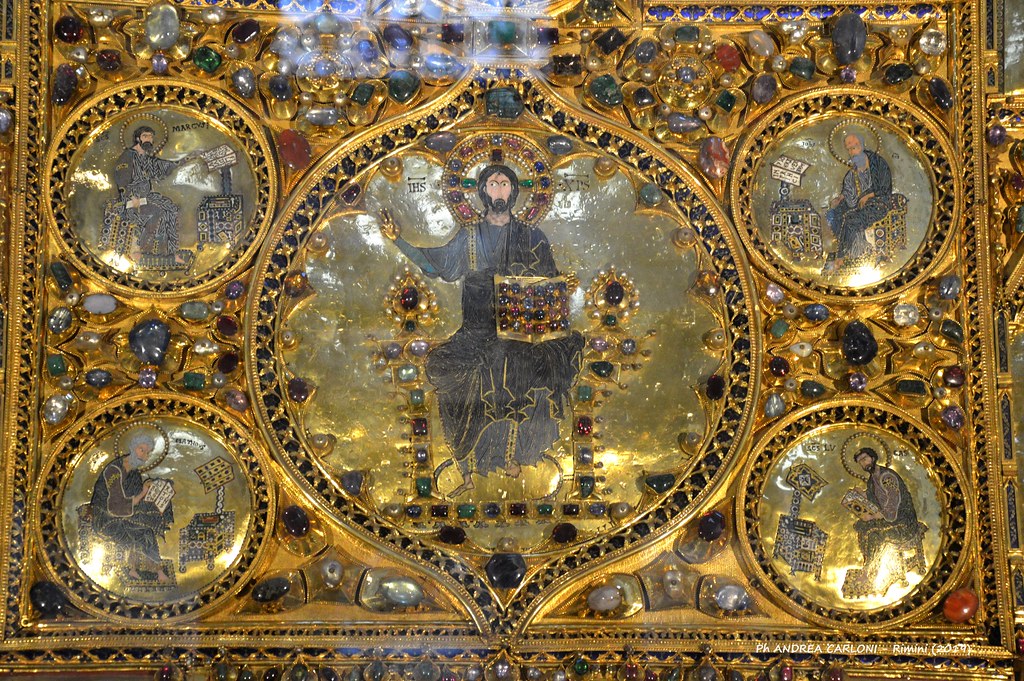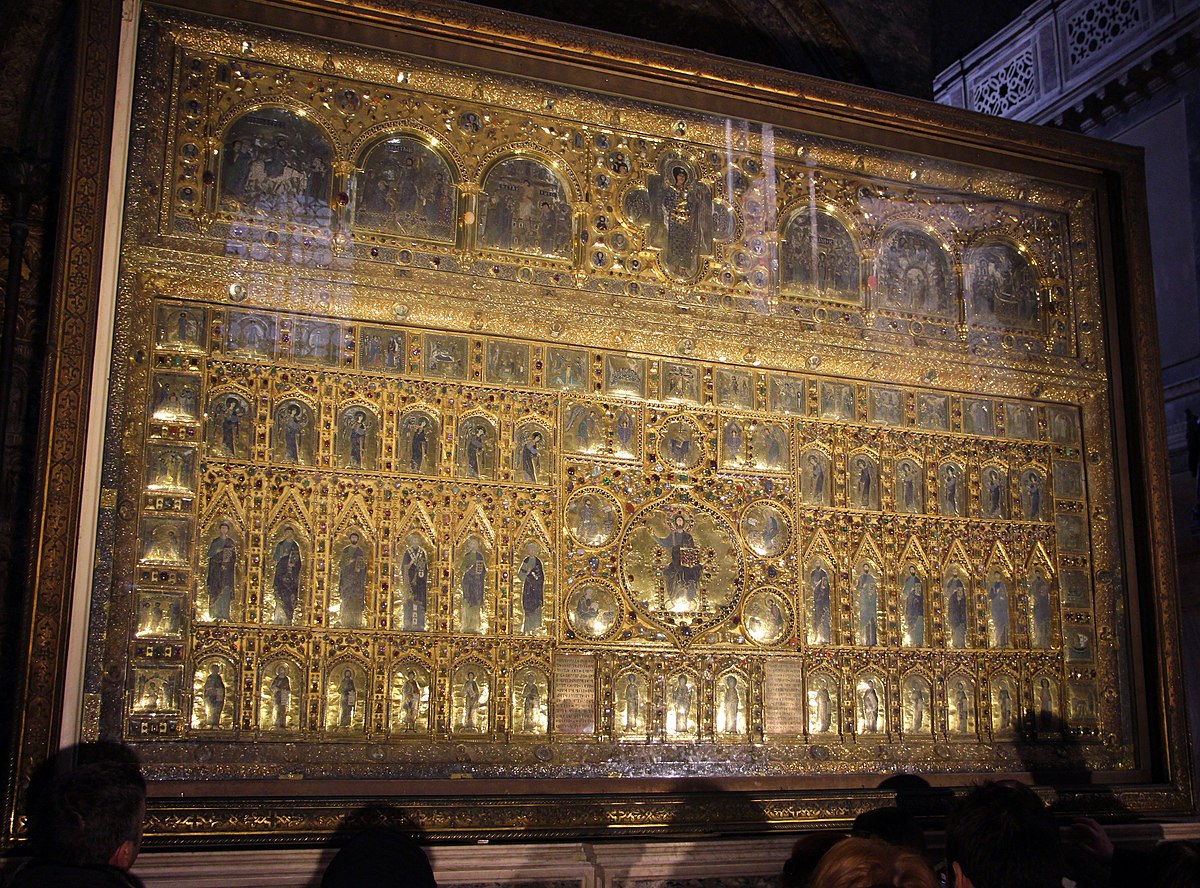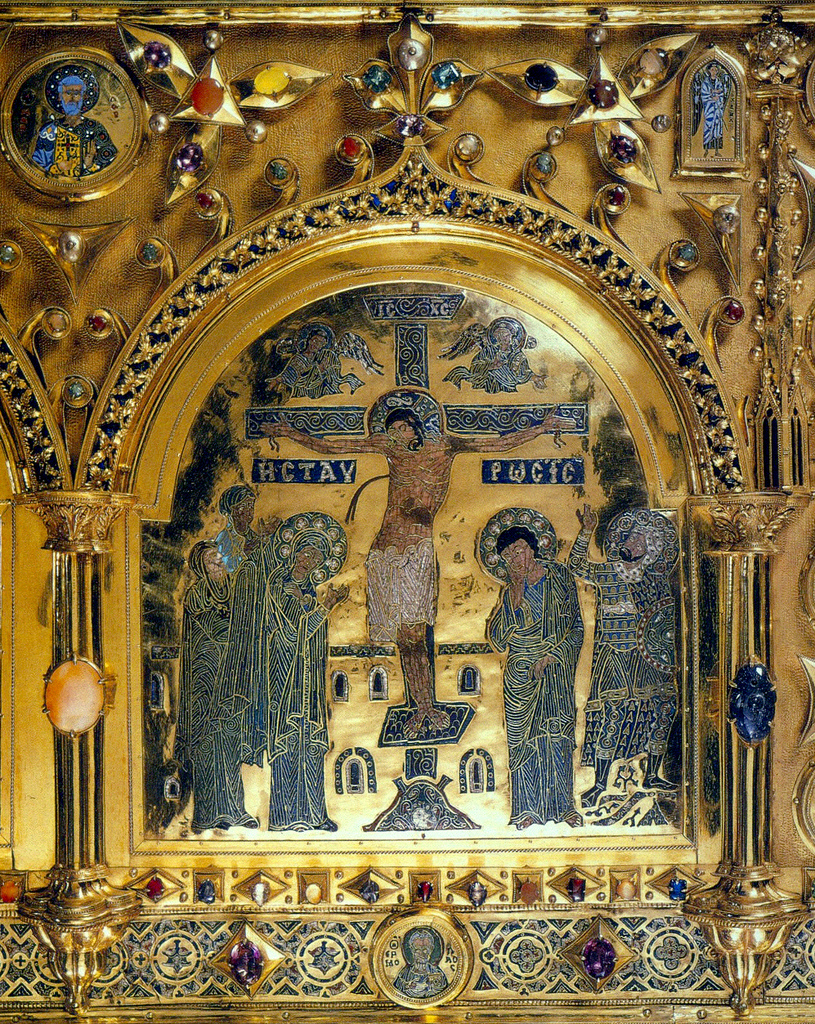
Anyone planning a trip to Venice always comes across the advice to visit St Mark’s Basilica and admire its most precious jewel: the Pala d’Oro (Golden Pall). But what exactly is it? And why is it so important?
Every corner of Venice hides a priceless treasure and exploring this city means stumbling upon a true paradise for lovers of art, beauty and goldsmithing.
The Pala d’Oro is the great masterpiece of Venetian goldsmithing and in this post I will explain why.
A jewel in Venice: St Mark’s Golden Pall

Among the many wonders to be seen in Venice, there is one work of goldsmithing that you absolutely cannot miss during your visit. I am referring to the Pala d’Oro, a breathtaking jewel located behind the main altar of the majestic St Mark’s Basilica.
WHAT THE GOLDEN SHOVEL IS
The Pala d’Oro (Golden Pall) is an imposing wooden frame about 2 metres high and 3.30 metres wide clad with silver plates and entirely covered with gold leaf. Inside this precious structure are 255 enamelled plaques and medallions, surrounded by no less than 1927 precious and semi-precious stones, including pearls, emeralds, rubies, garnets, sapphires, amethysts and topazes. These stones further enhance the beauty and importance of the sacred images set in the Golden Pall.
The sight of this extraordinary work of art leaves every visitor as breathless today as it did centuries ago. Its elegance, refinement and beauty are simply astonishing and its creation is linked to Venice’s desire to display its power and wealth. Every detail of the Golden Pall is a masterpiece of skill and talent, representing centuries of history and devotion.
HISTORY OF THE PALA D’ORO
The story behind the Pala d’Oro is very old and probably dates back to 1105, when Doge Ordelaffo Falier commissioned this extraordinary work of art to embellish St. Mark’s Basilica. The design and realisation were entrusted to skilled Byzantine craftsmen. Originally, the Pala d’Oro was a panel on which highly refined enamels were depicted, representing Christ surrounded by the evangelists, apostles, prophets and scenes from the life of Christ himself.
In the course of time, the Golden Pall was enlarged and enriched. In 1209, following the 4th Crusade, more enamel was added, coming from Constantinople as war trophies. Finally, in 1345, the frame was completely renovated with Gothic-style details, which seem to have been inserted into a 14th-century cathedral, enriched with even more gems.
The artistic technique used to create the Golden Pall is enamelling, a special process that creates surprising effects.
On a gold base, divided by thin gold foils, glass pastes of different colours are fused, following a process called cloisonné. Each colour requires a different melting temperature, so the process requires great skill and patience. The end result is a spectacle for the eyes: the colours are vivid, bright and intense, and do not fade over the centuries. They blend perfectly with the mosaics covering the domes, vaults and arches of St Mark’s Basilica.

THE THEMES AND CHARACTERS OF THE GOLDEN PALL
The Golden Pall tells a story of deep spirituality. Like an imposing iconostasis of the Orthodox tradition, it depicts a page from the Apocalypse according to a precise pattern. In the centre, we find Christ seated on a throne, surrounded by the four evangelists and angels. Along the vertical, the Virgin Mary, the prophets, the twelve apostles and twelve angels unite in a marvellous sacred painting.
There are two figures that particularly catch the eye: Christ himself and the imposing Archangel Michael, the latter added after the 4th Crusade. Both images are characterised by exceptionally fine detail.
The Golden Pall is an extraordinary testimony of art and spirituality merging into one work. Each image depicted is hieratic and majestic, standing out against the golden background. Although they are two-dimensional, they seem to come to life thanks to their intense and vibrant colours, almost trying to escape from the frame that contains them.
If you are passionate about art and want to explore the wonders of Venice, you absolutely cannot miss this extraordinary work of art during your visit. And remember that as soon as you leave the Basilica, you must not miss the opportunity to visit the Doge’s Palace in Venice and climb the St Mark’s Bell Tower.

